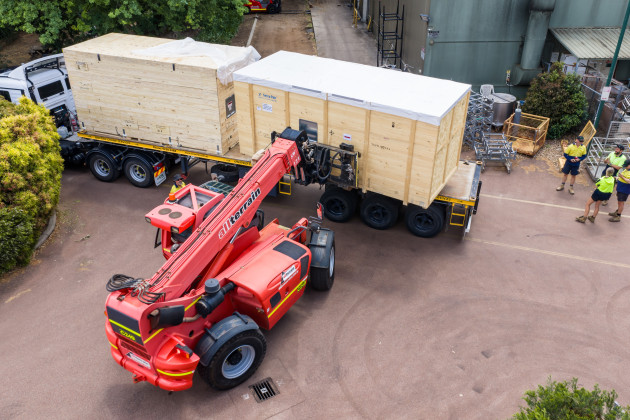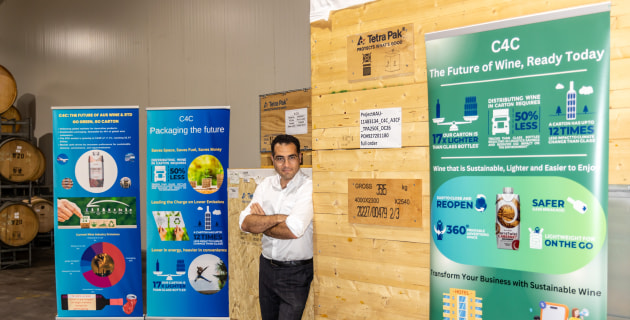PKN EXCLUSIVE: C4C Packaging is set to reshape Australia’s wine and ready-to-drink (RTD) landscape with the launch of Oceania’s first single-serve aseptic wine and alcoholic beverage co-manufacturing and packaging facility, producing lightweight, portion-controlled packs supplied by Tetra Pak.
Based at Nikola Estate in the Swan Valley, the new plant will combine nearly two centuries of winemaking heritage with world-leading beverage technology developed in collaboration with Tetra Pak. The result will be a production hub capable of filling and sealing single-serve wine and RTD packs under aseptic conditions, ensuring product quality, flavour integrity and shelf stability without preservatives or refrigeration.

Equipment arrives at the new C4C Packaging site at Nikola Estate in the Swan Valley, WA.
C4C Packaging managing director Hamoun Aria said the new facility represents a turning point for both producers and consumers.
“We’re transforming the way people experience Australian wine and RTD beverages,” Aria said. “Consumers today want choice, convenience and the right portion size, delivered in packaging that aligns with their values. Our goal is to provide that without compromising on quality or sustainability.”
Next-gen packaging
The single-serve packs (Tetra Prisma Aseptic Edge cartons) are designed to make premium wine and RTDs more accessible and portable, meeting growing demand for formats that align with today’s health-conscious and environmentally-aware consumers. The cartons are made primarily from plant-based, FSC-certified materials and have the lowest carbon footprint* of any beverage packaging currently available in the Australian and New Zealand markets.
According to Aria, packaging accounts for up to 70 per cent** of the wine industry’s carbon footprint, largely due to reliance on glass bottles. “Everything else has evolved – phones have become smart, cars have gone electric – but packaging has remained tied to heavy, fossil-based materials,” he said. “We saw a clear opportunity to bring the same level of innovation to the beverage sector that other industries have already embraced.”
The new format is up to 17 times lighter than glass* and delivers as much as 12 times less impact on climate change, while maintaining flavour integrity and quality throughout the supply chain. For producers, the shift opens opportunities for export and for reaching new markets where traditional glass packaging is impractical or cost-prohibitive.
Heritage and innovation
C4C’s location at Nikola Estate – one of Australia’s oldest operating wineries – underscores the connection between tradition and technology.
“The site is the birthplace of Western Australian winemaking and home to one of Australia’s most stories labels, Houghton White Burgundy,” Aria said. “This is a region that helped define Australian wine. To be able to carry that legacy forward through innovation and responsible packaging is something we’re incredibly proud of.”
Commercial production is scheduled to begin in early 2026, and Aria confirms there is strong interest already coming from domestic producers and international distributors.
The facility will provide contract filling services for both established and emerging beverage brands, positioning Western Australia as a new hub for sustainable beverage manufacturing and export.
“C4C is about carrying Australia’s heritage forward responsibly and innovatively,” Aria said. “By offering portion-controlled, low-impact packaging, we’re giving consumers a better choice and giving the industry a new way to grow.”
*As per LCA of Beverage and Food Packaging in Australia and New Zealand, thinkstep Ltd, 2020
**As per Wine Australia Emissions Reduction Roadmap


Dining and Cooking